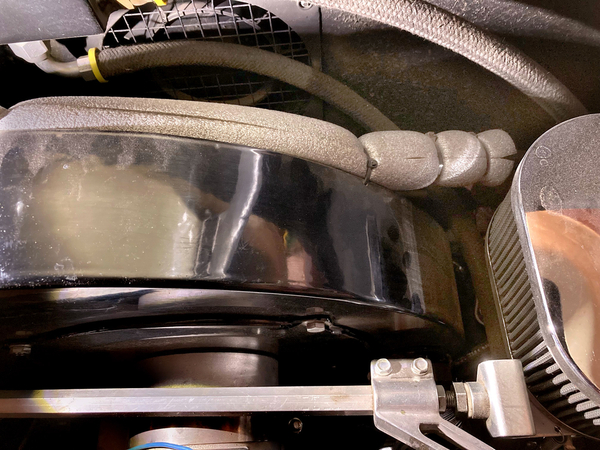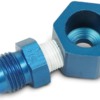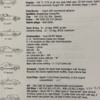I’ve had mine for four years and we are still in the “ getting to know you” and “exploring new things” stage.
It's a Speedster's prerogative to change its mind. ![]()
Any time and any place my friend. And you’ll like it.
@MarkusG another hard start tip might be to follow your fuel hose from carb to carb and carb to firewall and then on to where it enters the frame. Make sure it always stays away from high heat sources like exhaust pipes and engine tins. This includes the fuel filter if it is back there, too. And if the fuel filter is an el cheapo plastic one, swap it out for a metal can version.
If the fuel line gets near a heat source the heat can boil the gas in the line and make bubbles that might force fuel to overflow the carb float bowls and make it super rich on start up when it’s hot. Those bubbles can also cause it to crank for a while to get gas past the bubbles and up to the carbs. @dlearl476’s suggestion of holding the throttle open on a hot start makes sense, too. Check on your fuel hoses and keep trying stuff on starts until you find what works for you.
If my car hasn't been driven for a while I run the fuel pump for a bit before cranking it.
But, I don't want to turn the ignition on at that point because I don't want to dump my Accusump until I start cranking. So, I have a separate button to activate the fuel pump.
My local guru warned me about running my crossover hardline on the front of my shroud, but it hasn’t been enough of an issue to change it.
Metal shrouds can get pretty warm. I worked on a Speedster the other day and after running about 20 minutes(it was 87 degrees out) you couldn't keep your hand on the throttle linkage(hexbar style), it was too warm to hold it. The engine had no tins yet, and it also didn't have the doghouse oil cooler tin, so the engine compartment got pretty hot.
The fuel lines on this Speedster are run on the firewall separately to each carb, this worked well, no vapor lock.
Once on my Spyder I tried running the fuel line from one carb to the other, but by the transmission. Only time I ever got vapor lock.
I switched back to my original setup, metal line down the center tunnel. Teed at the bottom of the firewall, metal lines outward then up in front of each carb. Then a short rubber hose to each carb. This has been flawless for me over 15 years.
I recommend the same on a Speedster, running low and separate lines to each carb if you can.
On Webers, you can buy the plugs and/or the fuel inlet fittings. On Dells if you can't purchase a single fuel fitting, you can cap and clamp one bib on the double.
.
Low tech guy checking in here.
All rubber fuel lines in the engine compartment. The crossover line crosses over on the back of the shroud, but wrapped in foam pipe insulation.
In Home Depot We Trust.
Eight years, 'bout 33K miles and no issues - yet.
On the hottest days, the shroud gets almost too hot to touch, but not quite.
.
Attachments
The foam insulation doesn’t melt from the heat?
.
@Phisaac posted:The foam insulation doesn’t melt from the heat?
No. I think if the shroud got hot enough to melt the foam, the melting plastic would be the least of my troubles.
I have noticed that professional refrigeration installs use what looks to be a higher grade rubber insulation that would probably be a better choice here.
I'll bet the man from Stanistan would know.
.
@DannyP posted:On Webers, you can buy the plugs and/or the fuel inlet fittings. On Dells if you can't purchase a single fuel fitting, you can cap and clamp one bib on the double.
I went this route in recommendation from Dave @Blackline. I have older Dells with the smaller bolt and the single banjo is NLA ( or was. I think Dellorto Shop UK had some repros made , but they’re $50)
This came up the second time the plug I had on the double banjo was dried and cracked when I did a visual pre-flight. I didn’t want to risk it and lost the “T” and installed the hard line. I was hesitant originally, worried that it might make for a pressure drop on the downstream carb, but Dave assured me they did it all the time and it’s not a problem. Makes sense since the double banjos are all that’s available for the small bolt banjos
Like I said, no big deal so far. At some point I plan to cover the crossover with some fiberglass thermosleeve.
If you want to go a different direction, Earl's makes a 6 AN banjo bolt adapter (PN: 991951ERL):
Attachments
I have only one question. Why do they have to be blue? Why not basic black?
CB, JayCee, Scat, EMPI. They all do it too with all their different bits and trinkets. I like anodized silver or black. Red and blue are so 90s.
I have a replacement Wilwood in black already for my red anodized Neal slave cylinder. The manufacturers must realize by now that the brightly anodized colors are not universally wanted.
@DannyP posted:I have only one question. Why do they have to be blue? Why not basic black?
CB, JayCee, Scat, EMPI. They all do it too with all their different bits and trinkets. I like anodized silver or black. Red and blue are so 90s.
I have a replacement Wilwood in black already for my red anodized Neal slave cylinder. The manufacturers must realize by now that the brightly anodized colors are not universally wanted.
Agreed, but did you know you can remove the adonizing with EZ Off oven cleaner? Now you do.
SWEET! Thanks Stan.
Too bad for the CB full flow pump cover on the motor I just built. I'm definitely not disassembling it to rid it of the blue. It was the only one available.
You guys with all you technical knowledge amaze me. I have had my VS Speedster at 6500 ft for 12 years. The first 5 years it never ran properly. I took it to two different local air cooled "experts". It always backfired, ran rough and or idled poorly. I then discovered Anthony Merjano at Anthony's Auto Weeks in Auburn (my home town). Since he has had the responsibility for my car it runs perfect at any altitude. Obviously it has 20% less HP at my home in Lake Tahoe but it still goes pretty well. At Sea level it is like having a bigger engine. The only down side it the gas mileage. I get around 12 mpg at the Lake and 18 at Sea level. My advice would be if you do not have the skills a few of our members have call Anthony and perhaps he can recommend someone near you he would trust.
@Stan Galat posted:
LOL. I've had that page bookmarked for more than six months. My fuel line conversion is way down on the list.
Anthony, and his crew, IS the man!
Anthony is GREAT in my book.
Hope everyone is having a great start to their week!
Well the value of this thread has been incredible. After doing the adjustment on the mixture myself from the instructions provided I was able to get her to an aircooled specialist. THANK YOU!
They told me it was basically running on 2 cylinders and cleaned both carbs -- I've attached the work done so you can see. From running so rich before I took it in a couple of spark plugs needed replacing. They told me to take it and drive it to see how it drives vs what I knew before... and I gotta say, it's still limping. Feels like it's missing some horsies... especially when I floor it at 3k+ rpms. The numbers are on the worksheet.
They said the next step would be to jet it... so, I'm curious, what jets would you recommend? I've attached the engine specs as well as the jets etc. Also, where would I get those Jaycee bolts? I don't want to buy the wrong ones for the idle jet so any direction would be helpful.
Thanks again for everything. I'm wanting to do this last part myself if possible.
Cheers!
Attachments
Did they adjust the valves, ice cold? Did they steam the combustion chambers to blow out carbon?(which could be causing valves not to seat/seal and give low compression)
Those compression readings are uneven and low. Before jetting and tuning all else MUST be right, or you're just wasting time(and money).
.
After reading your mechanic's report, I'll add this to Danny's comments.
Ask him (the mechanic, not Danny) what he measured the fuel pressure to be.
This is kinda a trick question, as it looks like he may not have done that, and it's another thing that needs to be done before you start poking around with the jets. Each type of carb needs a particular fuel pressure to work right, and your Webers should have pretty close to 3 psi. If that is off by much, they'll never be right. Not hard to check or adjust, but anyone who knows these carbs will start there.
Next, another trick question. What did he measure the float height and drop at? These are other key settings that need to be checked before the laying on of hands upon the jets. This will also tell you if he bothered to take the tops off the carbs and check the condition of the float bowls - often the root of all evil.
If he hesitates or waffles answering either of these two questions, you may need to seek help elsewhere.
Third, as is being discussed here in another thread right now by Danny and Stan, ask him if he checked the timing and saw any evidence of spark scatter. That is a third factor that needs to be right before you have any hope of having a smooth running engine.
If your man is worthy, he shouldn't have any problems with you asking about these things and should also have some direct answers for you.
Be self-effacing. Be gracious. Be polite.
But, as the Boy Scouts advise, be prepared.
.
Done! Thanks guys. Awaiting their response 🙏🏻







